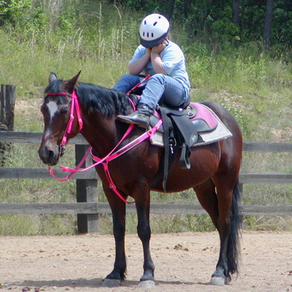Why Does My Horse Still Have This Problem?
July 10, 2014
Written by: Josh Lyons & Keith Hosman
Written by: Josh Lyons & Keith Hosman
|
Your horse is a living, breathing thing with emotions, desires, strengths and weaknesses. And while he may be trained to your liking today, keeping him there is going to take consistency on your part. By the same token, if your horse has a problem today then its "inconsistency" that might have got you there.
If your horse has the same problem today it had 3 months ago then the answer is to become more consistent in your training. 
Here's inconsistency: You pick up the rein. Your horse tugs back and you think to yourself "Oh, I just don't feel like dealing with it today." Bang! You've just taught your horse that some days he can get away with pulling on you. Now he'll begin testing you. Every day he'll pull to see if maybe this is the day he can get away with a little more. A seed has been planted. A little problem grows into a big headache.
Here's consistency: You pick up the rein. Your horse tugs back. You take the time to hold onto that rein until the horse softens and gives. (You might also want to apply a little extra motivation at that moment like increasing the speed, disengaging the hips, adding a bit of pressure, etc.) You respond this way each and every time, 24/7, 365 days per year. It's your job to be consistent simply because horses become mirror images of their owners. Let's say you buy a horse and the horse pulls on the bit like he's trying to rip your arms out of their sockets. Well, you can blame the previous owner for that behavior for only about three months. That's it. Three months. After that, it's your fault because three months is enough time to change your horse if you're being consistent and truly working toward fixing the issue at hand. The other guy might have created the problem, but four months later you've either allowed the problem to continue - or you don't know how to fix it. Obviously something you're doing isn't fixing the problem. Does this sound like you? Ask yourself: What am I doing to allow this problem to continue?
Try becoming more consistent in your training. If you've got a problem that doesn't seem to be going away, then when you get on your horse, concentrate more and work harder. Work for improvement. Don't just kind of hang out and mosey around; stay on the horse as long (or as little) as it takes to see improvement - no matter how small. Drive that horse. Put the head in the same place every time, perfect your circles, get control of the hindquarters. In the example given above (the horse with the stiff neck), you might practice turning your horse, releasing your rein on the turns - and only when the horse drops his head or softens his neck muscles. Whatever, just push and be consistent. If you need a break stop, get off, walk around... but when you get back on the two of you have to get back at it.Consistency is the answer because teaching the horse one bad thing is the equivalent of teaching the same horse twenty good things. If you release the rein at the wrong time and teach him to pull on the bit, then it'll take twenty more times of "correct releases" just to get back to where you were. A horse learns a bad habit a heck of a lot quicker than a good one. You can teach any horse to rear up, buck or bite you every time you cinch it up in about ten minutes - but it'll take two weeks to correct it. Tip: Teach almost anything to your horse with the "Clock Work Exercise." That's a chapter in the basic training book "What I'd Teach Your Horse" - and you can hear the whole section right now for FREE on audio when you click here.
So it's important that while you're training (as opposed to out joy riding on the trail), that you stay focused. No matter what, your expectations stay the same (or rise). Why? Because when you are not focused, without even realizing it, you're allowing the horse to develop bad habits. Maybe you're doing a circle, you're talking to your friend and you don't realize that your horse has begun tugging on the rein, drifting out, pinning his ears at another horse or snatching at grass.
Your horse isn't a machine. He's going to have good days and bad days just like you will. Some days you'll look in the stall and know you shouldn't go in. Other days will be just great. But in your dealings with your horse, all days need to be treated the same - because it's consistency that keeps your horse trained and your horsekeeping more enjoyable. Simply put, it's going to take constant maintenance on your part every day forever. The more consistent you are, the fewer mistakes you'll teach your horse. The fewer mistakes the horse learns, the quicker you can get onto the trail for the trail rides you've earned. Get your horse to stop now, not later. If it takes 2 seconds to go from a walk to a stop - multiply that by 8 when he's excited. Click here to read the "Hip-Shoulder-Shoulder" 3-part series of article - and get that stop the easy way!
Print this article:
Wanna teach your horse to drop its head and stay relaxed? When you're finished with this article, click here to read about the "Classic Serpentine."
|
| ||||||

